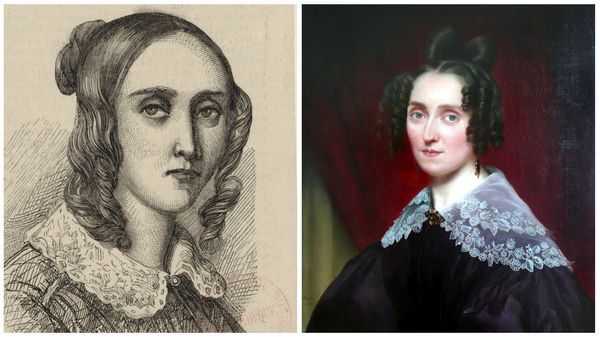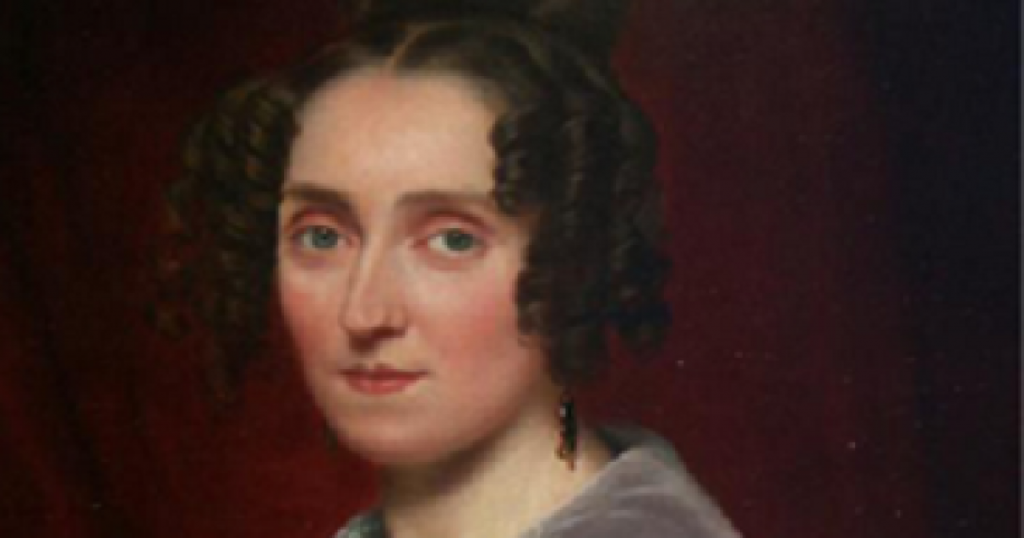

Louise Farrenc (née Jeanne-Louise Dumont; 31 May 1804 – 15 September 1875) was a French composer, virtuoso pianist and teacher.
Biography
Born Jeanne-Louise Dumont in Paris, she was the daughter of Jacques-Edme Dumont, a successful sculptor, and sister to Auguste Dumont, also a sculptor. Louise Farrenc enjoyed a considerable reputation during her own lifetime, as a composer, a performer and a teacher. She began piano studies at an early age with Cecile Soria, a former student of Muzio Clementi. When it became clear she had the ability to become a professional pianist she was given lessons by such masters as Ignaz Moscheles and Johann Nepomuk Hummel, and, given the talent she showed as a composer, her parents decided to let her, in 1819 at the age of fifteen, study composition with Anton Reicha, the composition teacher at the Conservatoire, although it is unclear if the young Louise Dumont followed his classes there, since at that time the composition class was open only to men. In 1821 she married Aristide Farrenc, a flute student ten years her senior, who performed at some of the concerts regularly given at the artists’ colony of the Sorbonne, where Louise’s family lived. Following her marriage, she interrupted her studies to give concerts throughout France with her husband. He, however, soon grew tired of the concert life and, with her help, opened a publishing house in Paris, which, as Éditions Farrenc, became one of France’s leading music publishers for nearly 40 years.
In Paris, Farrenc returned to her studies with Reicha, after which she reembarked on a concert career, briefly interrupted in 1826 when she gave birth to a daughter, Victorine, who also became a concert pianist but who died in 1859 aged thirty-three. In the 1830s Farrenc gained considerable fame as a performer and her reputation was such that in 1842 she was appointed to the permanent position of Professor of Piano at the Paris Conservatory, a position she held for thirty years and one which was among the most prestigious in Europe. Accounts of the time record that she was an excellent instructor, with many of her students graduating with Premier Prix and becoming professional musicians. Despite this, Farrenc was paid less than her male counterparts for nearly a decade. Only after the triumphant premiere of her nonet, at which the famous violinist Joseph Joachim took part, did she demand and receive equal pay. Besides her teaching and performing career, she also produced and edited an influential book, Le Trésor des Pianistes, about early music performance style, and was twice awarded the Prix Chartier of the Académie des Beaux-Arts, in 1861 and 1869.
Farrenc died in Paris. For several decades after her death, her reputation as a performer survived and her name continued to appear in such books as Antoine François Marmontel’s Pianistes célèbres. Her nonet had achieved around 1850 some popularity, as did her two piano quintets and her trios. But, despite some new editions of her chamber music after her death, her works were largely forgotten until, in the late 20th century, an interest in women composers led to the rediscovery – and thence to the performance and recording – of many of her works. In December 2013, Farrenc was the subject of the long-running BBC Radio Three programme Composer of the Week.
Music
At first, during the 1820s and 1830s, she composed exclusively for the piano. Several of these pieces drew high praise from critics, including Robert Schumann. In the 1830s, she tried her hand at larger compositions for both chamber ensemble and orchestra. It was during the 1840s that much of her chamber music was written. While the great bulk of Farrenc’s compositions were for the piano alone, her chamber music is generally regarded as her best work.
Throughout her life, chamber music remained of great interest. She wrote works for various combinations of winds and or strings and piano. These include two piano quintets Opp.30 & 31, a sextet for piano and winds Op. 40, which later appeared in an arrangement for piano quintet, two piano trios Opp.33 & 34, the nonet for winds and strings Op. 38, a trio for clarinet (or violin), cello and piano Op. 44, a trio for flute (or violin), cello and piano Op. 45, and several instrumental sonatas (a string quartet sometimes attributed to her is regarded by specialists as the work of another composer, not yet identified).
In addition to chamber music and works for solo piano, she wrote two overtures and three symphonies. She heard her third symphony Op. 36 performed at the Société des concerts du Conservatoire in 1849. The one area which is conspicuously missing from her output is opera, an important lacuna as opera was at the time the central musical form in France. Several sources, however, indicate that she was also ambitious in that field, but did not succeed in being given a libretto to set to music by the Théâtre de l’Opéra or the Théâtre de l’Opéra-Comique, for reasons still to be discovered.
Legacy
François-Joseph Fétis, a leading Francophone 19th-century music biographer and critic, wrote in the 2nd edition of his Biographie universelle des musiciens (1862) of Louise Farrenc as follows:
“Unfortunately, the genre of large scale instrumental music to which Madame Farrenc, by nature and formation, felt herself called involves performance resources which a composer can acquire for herself or himself only with enormous effort. Another factor here is the public, as a rule not a very knowledgeable one, whose only standard for measuring the quality of a work is the name of its author. If the composer is unknown, the audience remains unreceptive, and the publishers, especially in France, close their ears anyway when someone offers them a halfway decent work; they believe in success only for trinkets. Such were the obstacles that Madame Farrenc met along the way and which caused her to despair.”
Her work fell into obscurity, though recognised by the savants and connoisseurs of the time as first rate. The quality of her work was not enough to sustain her fame as a composer. A revival of interest commenced in the late 20th century. https://en.wikipedia.org/wiki/Louise_Farrenc
Louise Farrenc: Piano Quintet no.2 Op.31 E Major (1804-1875) Movements: 1. Andante sostenuto – Allegro grazioso 2. Grave 3. Scherzo. Vivace 4. Finale. Allegro Eriikka Maalismaa, violin Riitta-Liisa Ristiluoma, viola Mikko Ivars, cello Teemu Kauppinen, double bass Emil Holmström, piano
Mikko Franck dirige l’Orchestre philharmonique de Radio France dans la Symphonie n°3 de Louise Farrenc. Concert enregistré samedi 3 février à l’Auditorium de la Maison de la Radio (Paris).
Sonate pour violon et piano No. 1, Op. 37: I. Largo – Allegro · Gaëtane Prouvost, Laurent Cabasso Louise Farrenc: L’œuvre pour violon et piano
